Francis dynasty
Empire of Fiva Fiva | |||||||||
|---|---|---|---|---|---|---|---|---|---|
| 930–1180 | |||||||||
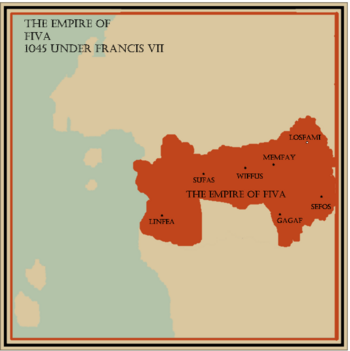 Map of the Bennett dynasty | |||||||||
| Status | Empire | ||||||||
| Capital | Losfami | ||||||||
| Common languages | Old Vihish | ||||||||
| Religion | Buddhism Cheondoism | ||||||||
| Government | Monarchy | ||||||||
| Emperor | |||||||||
| History | |||||||||
• Death of Ishaan Bennett | 930 | ||||||||
• Coronation of Levi Francis | 930 | ||||||||
• Linda Francis ceded the throne to Susarman Medaw | 1180 | ||||||||
| |||||||||
| Today part of | |||||||||
Chronology
These are the Emperors of the Bennett dynasty and when they reigned :
1.Levi Francis (930 - 932)
2.Rylee Francis (932 - 945)
3.Ronald Francis (945 - 955)
4.Hayes Francis (955 - 957)
5.Freddie Francis (957 - 1009)
6.Michael Francis (1009 - 1036)
7.Jenson Francis (1036 - 1072)
8.Spencer Francis (1072 - 1127)
9.Callum Francis (1127 - 1129)
10.Brenton Francis (1129 - 1134)
11.Jett Francis (1134 - 1143)
12.Ariel Francis (1143 - 1165)
13.Linda Francis (1165 - 1180)
History
Coronation of Levi Francis
In 930, Emperor Ishaan Bennett died. The country needs a new Emperor. Because of that, an unexpected election has been held by Grand Preceptor Alfiwn Gibb to decide the new Emperor of the country. Many people have applied to be the candidate, but there were only two people received major votes from the citizen. They are Levi Francis and Artemisios Alcaeus. Levi Francis has 64% votes and Artemisios Alcaeus has 32% votes so Levi Francis won the election and coronated after that, starting the Francis dynasty.
See : 930 Viba Emperor Election
Early Francis (930 - 957)
The reign of Levi Francis only lasts for 2 years after his death in 932. His son, Rylee Francis replaced him but didn't make any notable contributions. This status continued in the reign of Ronald Francis. The fourth Emperor of Francis dynasty, Hayes Francis died in 957 by a strange disease.
The Prosperous Freddie - Spencer Era (957 - 1127)
After the death of Hayes Francis, his son, Freddie Francis replaced him. He has started the 170-year prosperous era of Francis dynasty. In this era, every aspect of the country developed, especially Science and Technology. New inventions have been invented in this era. This era ended in 1127 by the death of Spencer Francis, a great Emperor but doesn't know how to teach his children.
Late Francis (957 - 1143)
In 1127, Callum Francis coronated. He has spent the country's money for his own dissipation. This is the darkest time of the dynasty. This status continued in the reigns of Callum Francis, Brenton Francis and Jett Francis. But things have changed in the reign of Ariel Francis, he revivified the country with new policies, especially the 2-year tax exemption. His only bad is appearance, he is an ugly man and only some women became his consorts. Therefore, he has only one child, Linda Francis, but this child is a girl.
Coronation of Linda Francis
In 1165, Linda Francis coronated. She became the first and only Queen in Vihish history.
Collapse of the dynasty
A Grand Preceptor in the reign of Linda Francis named Susarman Medaw attracted the Queen. She confessed her love with him one day. This caused the end of the Francis dynasty. Susarman Medaw is an intriguing person, he replied: "If you want me to marry you, you need to ced your throne to me." In 1180, they married and the throne of Linda Francis was ceded to Susarman Medaw, marked the collapse of the Francis dynasty.
Society and Culture
The Order of Gentry
The Order of Gentry was promulgated in the reign of Jenson Francis. It says that all learned men, degree-holders and local elites can apply for the Gentry Title. Gentry is a variable source for officers recruiting and is a minimum criterion to hold Tier 2 and above offices.
Law
The Grand Chiefs maintains law and order in the urban areas and somewhere in the countryside. The Grand Secretaries overseeing cases in court are not only expected to proficient in law but also promote morality in society. The Grand Secretaries can specify the guilty person or party in a criminal act and meted out punishments accordingly in the form of caning. A guilty individual or parties brought to court for a criminal or civil offence were not viewed as wholly innocent until proven otherwise, while even accusers were viewed with a high level of suspicion by the judge. Due to costly court expenses and immediate jailing of those accused of criminal offences, people in Fiva preferred to settle disputes and quarrels privately, without the court's interference.
Organization
| Rank | Name of Office | List of Office Holders | Number of people can hold office at the same time |
|---|---|---|---|
| Emperor | 1 | ||
| Tier 1 | Grand Commandant | List of Grand Commandants of Fiva | 1 |
| Tier 1 | Grand Preceptor | List of Grand Preceptors of Fiva | 1 |
| Tier 1 | Grand Master | List of Grand Masters of Fiva | 1 |
| Tier 2 | Grand Marshal | List of Grand Marshals of Fiva | 1 |
| Tier 3 | Grand Secretary | 10 | |
| Tier 4 | Grand Chief | Doesn't matter |
Military
In order to strengthen the royal authority and stabilize the military class, Levi Francis decided to strengthen the central government to exercise the right and to prevent soldiers from depriving benefits. He has also abolished some powers of The Grand Marshal (Military Chief).
The dynasty enforced voluntary conscription, and recruit homeless people, hungry people as soldiers, as a traditional national policy. The Francis dynasty army divided into four military forces, which were Imperial Guards, Province Guards, Martial Guards and Border Guards. Imperial Guard as regular troops is also the main force in the Francis dynasty army. Province Guard is the local army, controlled by local leaders. Martial Guards are composed of soldiers selected by the Grand Commandant. The Border Guard is the army defending the borders.
Arts
The visual arts during the Francis dynasty were heightened by new developments such as advances in landscape and portrait painting. The gentries engaged in the arts as accepted pastimes of the cultured scholar-official, including paintings. Emperor Callum Francis was a renowned artist as well as a patron of the arts.

Pigeon on a Peach Branch, a painting of Callum Francis
Philosophy
About philosophy, the Francis has a much higher level of development than the previous centuries, including not only the Bennett Dynasty's development as the concept of the master of the technology, including the scholastic nature. Bennett scholars seek to explain all philosophical and political issues in classical Confucian works. This caused an increase in interest in Confucian and social ideas, coinciding with a period of diminishing Catholicism influence, which the Vihish leadership regarded as foreign and did not bring much thought.
Economy
Levi Francis after coronation immediately established a regime of private property rights with the land, free trade, and at the same time selected a policy of non-stop annexation, the fill business became a form of important local business. After the expiry of the contract, the farm can freely decide to suspend or succeed. Demographic mobility is enhanced, the urban trading develops.
The prosperity of the Francis dynasty economy, reaching an unprecedented level before, agriculture, printing, paper making, silk, porcelain all had great development. The maritime and shipbuilding industries have achieved remarkable achievements, foreign trade, and trade with other countries. In the Francis dynasty, Western parts have developed comprehensively on a large scale, making the West become China's economic-cultural centre, completely replacing the East.
Technology and science
As early as the Bennett dynasty, when the state needed to accurately measure distances travelled throughout the empire, the Vihish relied on a mechanical odometer. The Vihish odometer was a wheeled carriage, its gearwork being driven by the rotation of the carriage's wheels. The specifications for the 12th-century odometer were written by Grand Commandant Denver Hail. In the Francis period, the odometer vehicle was also combined with another old complex mechanical device known as the south-pointing chariot. This device, originally crafted by a Literature Officer in the Cunningham dynasty, incorporated a differential gear that allowed a figure mounted on the vehicle to always point in the southern direction, no matter how the vehicle's wheels turned about. The concept of the differential gear that was used in this navigational vehicle is now found in modern automobiles in order to apply an equal amount of torque to a car's wheels even when they are rotating at different speeds.
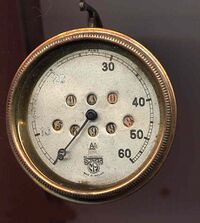
An ancient Francis dynasty mechanical odometer.
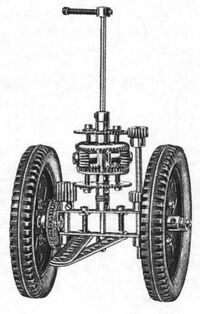
An iron south-pointing chariot.
Polymaths
Astronomy
Mathematics
There were many notable improvements to Vihish mathematics during the Francis era. Grand Preceptor Aldegar Benbow's 1026 book provided the earliest Vihish illustration of Pascal's triangle.Aldegar Benbow also provided rules for constructing combinatorial arrangements in magic squares, and was the first to use negative coefficients of 'x' in quadratic equations.
An another Grand Preceptor, Ansel Rider was the first to introduce the zero symbol into Vihish mathematics; before this blank spaces were used instead of zeroes in the system of counting rods. He is also known for working with the Vihish remainder theorem, Heron's formula, and astronomical data used in determining the winter solstice.
Cartography
Geometry was essential to surveying and cartography. Grand Preceptor Ansel Rider created a raised-relief map, while his other maps featured a uniform graduated scale of 1:900,000. A 3 1 meter squared map of 1053—carved into a stone block—followed a uniform grid scale of 100 centimetres for each gridded square, and accurately mapped the outline of the coasts and river systems of Viha, extending all the way to Vaxicor. Furthermore, the world's oldest known terrain map in printed form comes from the edited encyclopedia of him in 1155, which displayed Viha without the formal grid system that was characteristic of more professionally made Vihish maps.
Movable type printing
The innovation of movable type printing was first described by the Grand Preceptor Theydoard Rollins in 958. Movable type enhanced the already widespread use of woodblock methods of printing thousands of documents and volumes of written literature, consumed eagerly by an increasingly literate public. The advancement of printing deeply affected education and the gentry class, since more books could be made faster while mass-produced, printed books were cheaper in comparison to laborious handwritten copies. The enhancement of widespread printing and print culture in the Francis period was thus a direct catalyst in the rise of social mobility and expansion of the educated class of scholar elites, the latter which expanded dramatically in size from the 11th and 12th centuries.
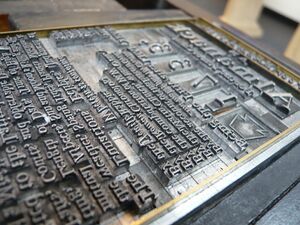
Picture of an ancient movable type printing.
Engineering
Some of the most famous engineering inventions in the Francis dynasty are magnetic mariner's compass, south-pointing to needle, pound lock for the canal system, watertight bulkhead, drydock, etc. A magnetic mariner's compass can permit accurate navigation on the open sea. The pound lock for the canal system can aid the safety of canal traffic.
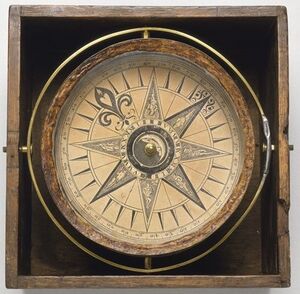
A Francis dynasty Magnetic Mariner's Compass
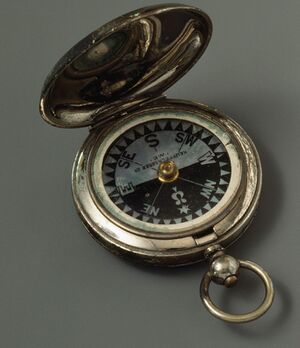
A Francis dynasty South-pointing to needle
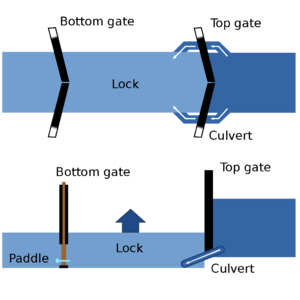
How a pound lock canal system work.
